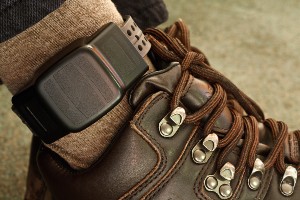Could I Be Electronically Monitored Instead of Jailed in California?
 As of July 2020, there are almost 100,000 people incarcerated in California. With overcrowded jails and prisons on top of the rising cost to incarcerate criminals, it’s no surprise that criminal courts are looking for creative ways to sentence convicted criminals.
As of July 2020, there are almost 100,000 people incarcerated in California. With overcrowded jails and prisons on top of the rising cost to incarcerate criminals, it’s no surprise that criminal courts are looking for creative ways to sentence convicted criminals.
A common alternative to jail time is electronic monitoring through ankle devices. To better understand this type of sentencing and how to obtain it, you should seek competent legal counsel. Attorney Dod with Dod Law can answer your questions about the possibility of avoiding incarceration through electronic monitoring.
How Does Electronic Monitoring Work?
Electronic monitoring is a form of surveillance of a specific person. Courts use it as intensive supervision that verifies offenders are at a designated location during set hours. A judge will specify the conditions of your monitoring.
Who Is Eligible for Electronic Monitoring?
If you are convicted of a crime in California, your attorney may be able to negotiate for you to receive house arrest instead of incarceration. However, not all convicted criminals are eligible for electronic monitoring. To be eligible, you must meet specific requirements, such as:
- Being a low-risk, nonviolent offender
- Living close to where you were sentenced
- Having a phone line
- Having been sentenced to jail time
- Agreeing to follow all rules and conditions of house arrest
It’s important to note that electronic monitoring is a privilege, not a right. A judge does not have to agree to it, and they can revoke it at any time if you break the terms and conditions. You may not be eligible for house arrest if you served time in California prison.
What Are the Conditions of Electronic Monitoring?
Once a judge orders house arrest, you avoid spending time in jail on the court’s conditions. Some conditions may be:
- Meetings with a probation officer
- Random drug or alcohol tests
- Curfew
Just because you’re serving time in your house instead of jail doesn’t mean you’re free to leave the house whenever you want. In most cases, you must stay inside, but there may be exceptions to leaving the house, including:
- Counseling
- Drug or alcohol class
- Doctor’s appointments
- Family emergencies
In some cases, a judge may even allow you to go to work. Part of the conditions of your house arrest may be to find and hold a job.
What Happens If I Break House Arrest?
If you go past an approved distance or do not return home at a set time, your ankle monitor will send a signal to an electronic monitoring agency, who will then notify your probation or parole officer. You could face arrest for breaking the terms of your house arrest. In addition, the judge will most likely revoke your electronic monitoring privilege and have you finish your sentence in prison.
Types of Electronic Monitoring Devices
There are a few different types of electronic monitoring devices. They are:
- Home detention monitoring: This is the most commonly used type of electronic tracking and involves an ankle bracelet the offender wears throughout their sentence.
- SCRAM monitor: SCRAM (Secure Continuous Remote Alcohol Monitoring Device) devices track your alcohol consumption. If the monitor detects alcohol, it will send a signal to authorities.
- Drug patch: If a court convicted you of a drug crime, you might have to wear a drug patch throughout your sentence. Like a SCRAM monitor, it tracks whether you consume any illegal drugs, including heroin, cocaine, and marijuana.
Does It Cost Money to Be Electronically Monitored?
Electronic monitoring isn’t free, nor is it paid for by the courts or government. Instead, the offender pays for the cost. Ankle monitors typically range from $12–$15 a day, with an initial installation fee of about $100. The price may vary by county. Low-income offenders may pay less, but they are not excluded from house arrest if they can’t afford to pay.
Reach Out to a Skilled Criminal Defense Attorney in California
If you’re facing criminal charges for a nonviolent offense, you may be eligible for electronic monitoring instead of jail time. Your attorney must request this alternative sentencing, though. Attorney Dod of Dod Law will work with you to determine whether you’re eligible for house arrest, and if you are, he will request it during your sentencing. With years of experience and thousands of cases behind him, he’s determined to achieve the best possible outcome for all his clients.
Call (619) 814-5110 or complete an online contact form to schedule your free consultation.
At a Glance
Meet Attorney Dod Ghassemkhani
- Recent Case Results
- San Diego Criminal Defense Bar Association | Named San Diego County’s 2023 Trial Lawyer Of The Year
- Award Winning Criminal Defense Attorney
- The National Trial Lawyers: Top 100 Trial Lawyers
- Over 20 years of criminal defense experience
- 10.0 “Superb” Avvo Rating
